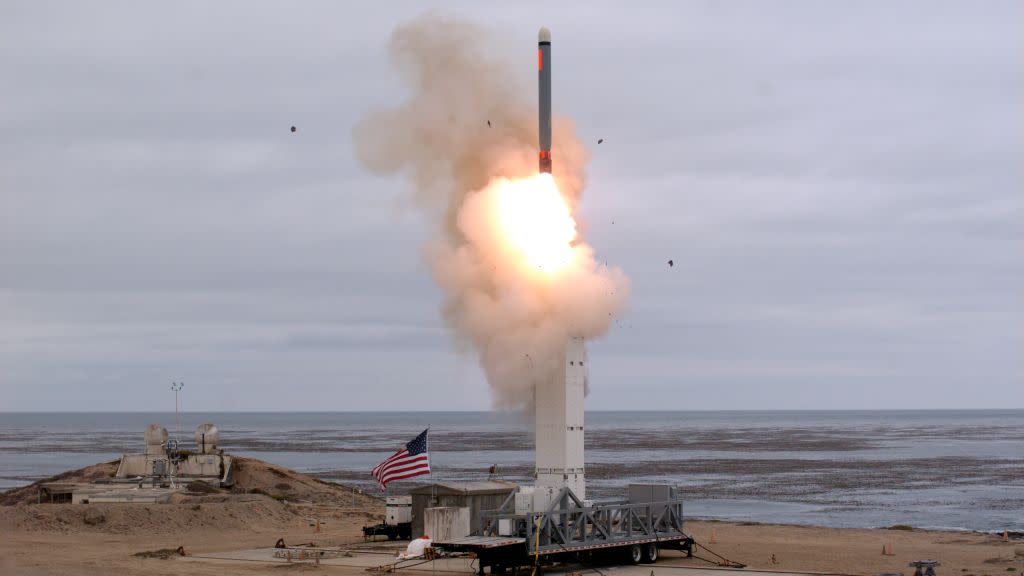The US proves Russia right with its first post-treaty missile launch

The US Army hurled a Tomahawk missile into the ocean off the coast of Southern California on Monday in a demonstration of American missile might and—you have to say—hypocrisy.
The Pentagon said the test would help develop new medium-range missile capabilities. The specifics of the demonstration—that the missile’s payload flew more than 500 miles—underscored president Donald Trump’s decision to withdraw from the Intermediate Nuclear Forces (INF) treaty.
That agreement, joined in 1987 by then-president Ronald Reagan, prohibited ground-based “medium range” ballistic missiles that could strike targets between 500 km (311 miles) and 5,500 km (3,417 miles) away. At the time, it helped lift Europe out of a Cold War missile crossfire.
The US officially abandoned the treaty earlier this month, after years of accusations that Russia violated its terms by developing new medium-range ballistic missiles. Russia, however, lodged its own protests after the Obama administration placed a naval missile-defense system called Aegis in Romania and Poland. While Aegis missile is designed to intercept incoming missiles, its Mark 41 launcher can be modified to launch the offensive Tomahawk.
“[The Aegis defense system] had to go through a legal arms control review and because it doesn’t have the necessary software to launch a Tomahawk cruise missile or any offensive systems…the determination was the Mark 41 launcher was treaty compliant,” Jon Wolfsthal, then a member of Obama’s national security council staff, told Quartz in February.
Wolfsthal, now an advisor to the arms control nonprofit Global Zero, said proposals to go beyond the treaty and physically modify the launcher to make offensive launches impossible, or to allow Russian transparency visits to the Aegis sites, were never approved.
And sure enough, during the Aug. 20 test, the Tomahawk missile took flight from a ground-based Mark 41 launcher, just as the Russians feared.
Matt Korda, an arms control researcher at the Federation of American Scientists, tweeted that while the US had not technically been violating the INF treaty, “for the US to now do exactly the thing that Russia has been concerned about for years doesn’t exactly help de-escalate tensions. And it confirms their suspicions about US missile defense deployments in Europe—that they could theoretically be used to launch Tomahawks.”
For the hawkish team in the White House, led by national security advisor John Bolton, reminding rivals of US capabilities is the point. Beyond Russia, US strategists are also concerned about China, which has built up the world’s largest missile arsenal, in part because it was never party to the INF.
The US has significantly increased spending on missile development under the Trump administration, leading to fears of a new arms race as countries seek to expand arsenals of high-tech weaponry, like a Russian nuclear-powered cruise missile that killed seven people during a test-gone-wrong on Aug. 8.
Sign up for the Quartz Daily Brief, our free daily newsletter with the world’s most important and interesting news.
More stories from Quartz:

